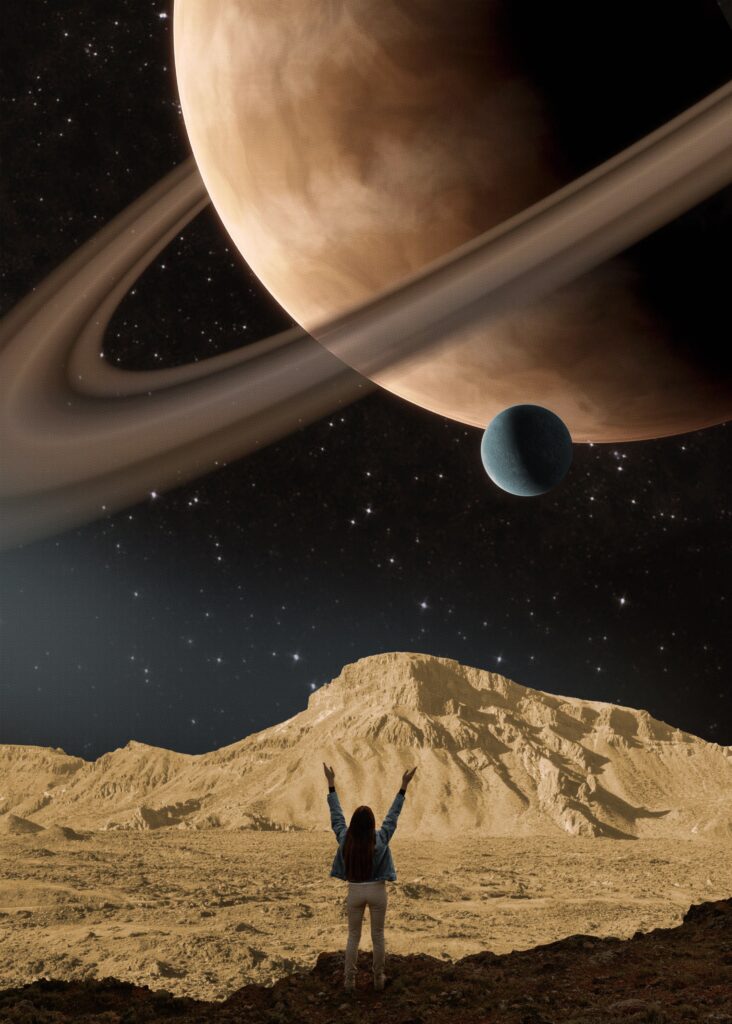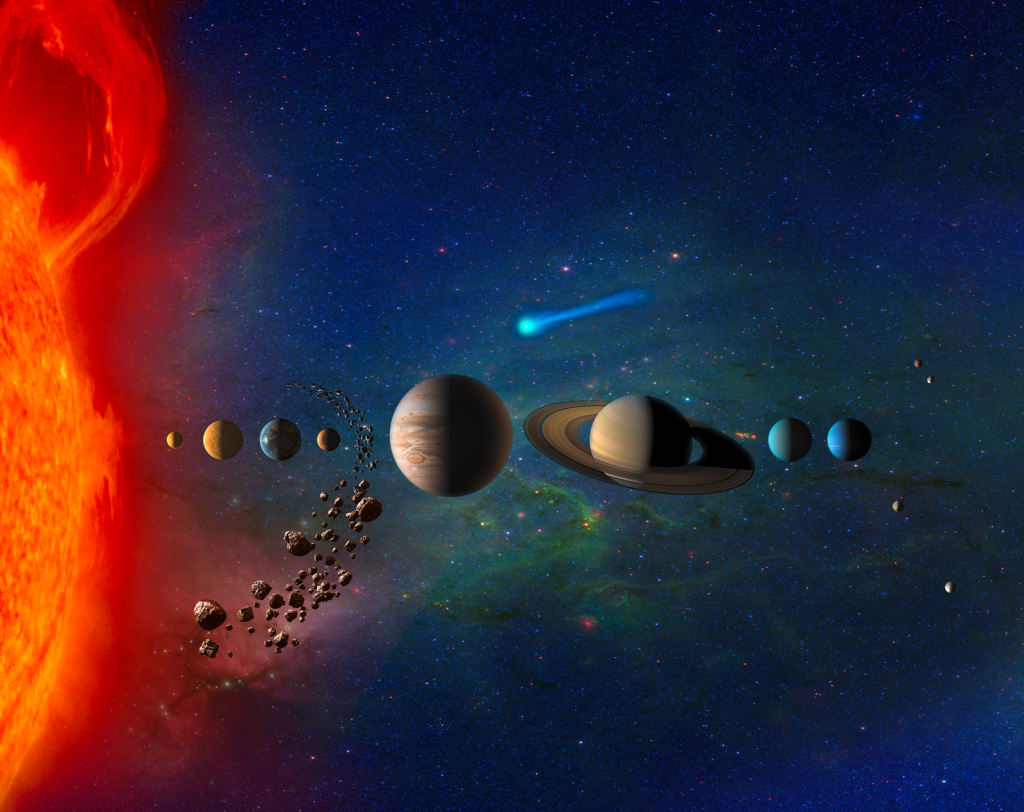The Moon may hold a secret that could transform human space exploration. Find out how the discovery of water ice could make long-term lunar habitation a reality.

Recent findings suggest that living on the Moon may be more feasible than scientists previously thought. New data from the Indian Space Research Organisation’s (ISRO) Chandrayaan-3 mission points to the presence of water ice just beneath the lunar surface in the Moon’s polar regions. New Evidence of Water Ice in the Moon’s Polar Regions
For decades, the Moon’s polar regions have been suspected to hold water ice. The exact extent and location of this ice remained unclear. Early studies, including those from NASA’s Apollo missions, were focused on equatorial regions, far from the poles. These studies used temperature measurements that indicated the Moon’s surface was too hot for water to exist in solid form.
However, new measurements from the ChaSTE (Chandrayaan-3 Surface Thermo-physical Experiment) onboard ISRO’s Vikram lander have provided a more detailed picture. Upon landing at the Moon’s south pole in 2023, the ChaSTE probe measured the surface temperatures in both flat and sloped regions.
Surprisingly, sloped areas that face away from the Sun were found to be much cooler than
Why Water Ice Could Be the Game-Changer for Lunar Exploration?
Water is vital for human survival, and its availability on the Moon could drastically change the way we approach lunar exploration. Not only can water be used for drinking, but it can also be split into oxygen for breathing and hydrogen for rocket fuel. This opens up the possibility of more self-sustained missions, reducing reliance on supplies from Earth.
The recent study highlight specific regions on the Moon, especially near the South Pole, that are rich in ice. These areas, with temperatures low enough to support water ice, may become key targets for future lunar missions.
NASA’s Artemis program has already set its sights on landing near these regions. If water ice is readily accessible, it could provide a sustainable source of water, making longer stays on the Moon feasible.
How This Discovery Shapes NASA’s Artemis Missions
NASA’s Artemis program plans to return astronauts to the Moon and establish a sustainable presence by the 2030s. The discovery of water ice in the Moon’s south pole could significantly impact the success of these missions. If ice is accessible, it could be used for drinking water, oxygen production, and even rocket fuel—reducing the cost and complexity of transporting resources from Earth.
The Artemis missions are targeting regions close to the lunar south pole, where the newly covered water ice may be abundant. The ice could play a key role in establishing a more permanent human presence, which is one of the program’s main goals.
With the possibility of in-situ resource utilization, astronauts could live off the land, making the Moon a more viable location for extended exploration and habitation .discovered water ice may be abundant. The ice could play a key role in establishing a more permanent human presence, which is one of the program’s main goals.
With the possibility of in-situ resource utilization, astronauts could live off the land, making the Moon a more viable location for extended exploration and habitation .discovered water ice may be abundant. The ice could play a key role in establishing a more permanent human presence, which is one of the program’s main goals.
With the possibility of in-situ resource utilization, astronauts could live off the land, making the Moon a more viable location for extended exploration and habitation .discovered water ice may be abundant. The ice could play a key role in establishing a more permanent human presence, which is one of the program’s main goals.
With the possibility of in-situ resource utilization, astronauts could live off the land, making the Moon a more viable location for extended exploration and habitation .discovered water ice may be abundant. The ice could play a key role in establishing a more permanent human presence, which is one of the program’s main goals.
With the possibility of in-situ resource utilization, astronauts could live off the land, making the Moon a more viable location for extended exploration and habitation.discovered water ice may be abundant. The ice could play a key role in establishing a more permanent human presence, which is one of the program’s main goals.
With the possibility of in-situ resource utilization, astronauts could live off the land, making the Moon a more viable location for extended exploration and habitation.discovered water ice may be abundant. The ice could play a key role in establishing a more permanent human presence, which is one of the program’s main goals.
With the possibility of in-situ resource utilization, astronauts could live off the land, making the Moon a more viable location for extended exploration and habitation.discovered water ice may be abundant. The ice could play a key role in establishing a more permanent human presence, which is one of the program’s main goals.
With the possibility of in-situ resource utilization, astronauts could live off the land, making the Moon a more viable location for extended exploration and habitation.discovered water ice may be abundant. The ice could play a key role in establishing a more permanent human presence, which is one of the program’s main goals.
With the possibility of in-situ resource utilization, astronauts could live off the land, making the Moon a more viable location for extended exploration and habitation.discovered water ice may be abundant. The ice could play a key role in establishing a more permanent human presence, which is one of the program’s main goals.
With the possibility of in-situ resource utilization, astronauts could live off the land, making the Moon a more viable location for extended exploration and habitation.
Here are 10 frequently asked questions (FAQs) based on the blog:
FAQs: Water Ice on the Moon & Lunar Exploration
- Is there really water ice on the Moon?
Yes, recent findings from ISRO’s Chandrayaan-3 mission and other studies confirm the presence of water ice beneath the lunar surface, particularly in the polar regions. - Why is water ice on the Moon important?
Water ice can be used for drinking, converted into oxygen for breathing, and split into hydrogen for rocket fuel, reducing the need to transport resources from Earth. - Where exactly is the water ice located?
The ice is primarily found in the Moon’s polar regions, especially in shadowed craters and sloped areas near the South Pole, where temperatures remain extremely cold. - How was the water ice discovered?
ISRO’s Chandrayaan-3 mission used the ChaSTE instrument to measure surface temperatures, confirming that permanently shadowed regions are cold enough to preserve water ice. - Could this discovery support human colonies on the Moon?
Yes, accessible water ice could make long-term lunar habitation feasible by providing essential resources for astronauts, such as water, oxygen, and fuel. - How does this impact NASA’s Artemis missions?
NASA’s Artemis program aims to land near the lunar South Pole, where water ice is abundant. This discovery could help establish a sustainable human presence by the 2030s. - Can lunar water be used for rocket fuel?
Yes, water can be split into hydrogen and oxygen, which are key components of rocket propellant, enabling refueling stations on the Moon for deep-space missions. - Why weren’t water ice deposits found earlier?
Early missions like Apollo focused on equatorial regions, which are too warm for ice. Advanced instruments and polar explorations have now confirmed its presence. - What challenges remain in using lunar water ice?
Extracting and processing the ice efficiently in the Moon’s harsh environment will require advanced technology and infrastructure. - Will this lead to a permanent Moon base?
If water ice can be successfully harvested, it could significantly support the development of a permanent lunar base, serving as a hub for future space exploration.
Would you like any modifications or additional details?








